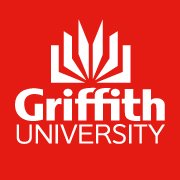Full description
The collection contains a lab notebook, as well as associated spreadsheets, documents, images, and phylogenetic analysis files. The data was collected as part of a UWSRA funded project investigating the reduction of selected biological and chemical contaminants in South East Queensland reservoirs and associated waterways. The data is part of an ongoing method development research program funded by the Water Quality Research Centre with Seqwater as industry partners. E.coli isolates were collected by Seqwater from Wivenhoe Dam, Somerset Dam and Baroon Pocket Dam, and provided as live cultures to the research team at the Smart Water Research Centre. The isolates were checked for purity and stored in nutrient broth & 30% glycerol at -80oC until analysed. A 518 base pair fragment of the beta-glucuronidase gene from all E. coli isolates was amplified, using the polymerase chain reaction and sequenced. The sequence data from unknown isolates was compared to a library of known E. coli beta-glucuronidase gene sequences. Multiple sequence alignments were performed using ClustalX. Gap-only columns in the multiple sequence alignment were removed and final editing of the alignment was performed in BioEdit to yield an aligned 518 base pair fragment. Phylogenetic analysis involved the construction of phylogentic trees using the Neighbour-Joining method. The NJ tree was generated using MEGA version 5 employing the Maximum Composite Likelihood model/method and 1,000 bootstrap replicates.Issued: 2012
Subjects
Biological Sciences |
Bacteriology |
E.coli |
Microbiology |
Microbial Ecology |
Microbial Genetics |
bacteria |
beta-glucuronidase gene |
catchment management |
dams |
management |
microbial Source Tracking |
pathogens |
reservoirs |
water contaminants |
water quality |
User Contributed Tags
Login to tag this record with meaningful keywords to make it easier to discover
Identifiers
- DOI : 10.4225/01/513E597A7BD0D

- Handle : 10072/395809



